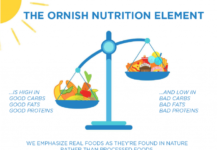Feeding children can be very difficult and can make it easy to choose foods that are not truly healthy, as long as they like to eat them. But there are foods that you should not feed your baby too often or not feed them at all.
1. Apple juice

The juices and soft drinks that parents often give their children mostly contain only sugar and flavorings. Not all juices are bad, but especially apple juice needs attention, because this is the type that children drink the most.
Parents may think that apple juice is better than oranges, grapefruits or cherries. But 100% apple juice still contains up to 160 calories per cup and contains a lot of chemical sweeteners. Drinking juice, children not only do not get the necessary amount of fiber, but also do not receive nutrients from the apple peel. You should also not pay too much attention to buying a lot of water advertised as having a lot of vitamin C and minerals, because children are usually not deficient in these substances.
2. Honey

Children under two years old should not be given honey. Bile can contain toxic bacteria that cause illness. This bacteria does not hurt adults, but children’s immune systems are not yet mature enough to fight it. This bacteria can appear in all types of honey, whether pure or processed.
3. Carbonated water

Soft drinks are one of the main causes of obesity, type 2 diabetes and aggressive behavior in children. A can of soft drink can contain 60 grams of sugar, four times more than a child’s daily sugar needs. Chemical sweeteners may be even more potent. Children who drink soft drinks do not receive nutrients but only empty calories.
4. Industrial cheese and pasta

Besides the fact that these are processed products with very little nutrition, they also contain a lot of sugar and preservatives, which can cause children to develop a craving for salty foods and crave foods containing more chemical sweeteners. In addition, the quick and easy preparation of this dish also makes children eat more unconsciously.
5. Fruit candy

Fruit-flavored candy, fruit-flavored cakes, marshmallows… contain only sugar and flavoring. You should not use them as a substitute for real fruit or as a regular snack or snack for children.
Even though they are advertised as being made from fresh fruit, these candies still contain a lot of sugar. Instead of using them, you should buy dried fruits.
6. Canned tuna

Fish is a good source of protein, healthy fats, vitamins and minerals. But tuna can contain a lot of mercury. Mercury can affect the nervous system of young children.
7. Energy drinks

Energy drinks can quickly provide low calories and electrolytes to help restore people who are very active. But energy drinks can cause poisoning in children. When your child is tired from playing or when he is too hot, you should give him orange juice or fresh fruit juice.
8. Frozen foods

Ready-made meats are often high in sodium, saturated fat, and preservatives and are made from low-quality chicken, fish, and cheese. Even though they have good ingredients, they are often processed quickly, so the fat and calories in them are still too high for children. You need to carefully look at the saturated fat content on the label.
9. Dipping sauce

Unless you use sauce to encourage children to eat more vegetables, children should not be exposed to dipping sauces too early, including chili sauce and ketchup. Sauces can add hundreds of calories and fat to your child’s meals.
10. Pure fresh milk

Even if you think that pure soy milk is better than pasteurized milk because the amount of digestive enzymes and nutrients are preserved, using fresh whole milk for children is very dangerous.
Unpasteurized milk can cause food poisoning because children’s immune systems are weak and very sensitive to the ingredients of milk.
Conclusion
Taking care of children’s health is an important responsibility of every family. By carefully choosing foods for our children’s meals, we can ensure that they will grow in a healthy and safe environment.
The above list of 10 foods that children should not eat is only a small part of the overall nutritional decision. This decision should be accompanied by creating a healthy eating environment that supports the child’s overall development, and exploring the world through interesting and diverse food.
By NewYork News9 and GPT










